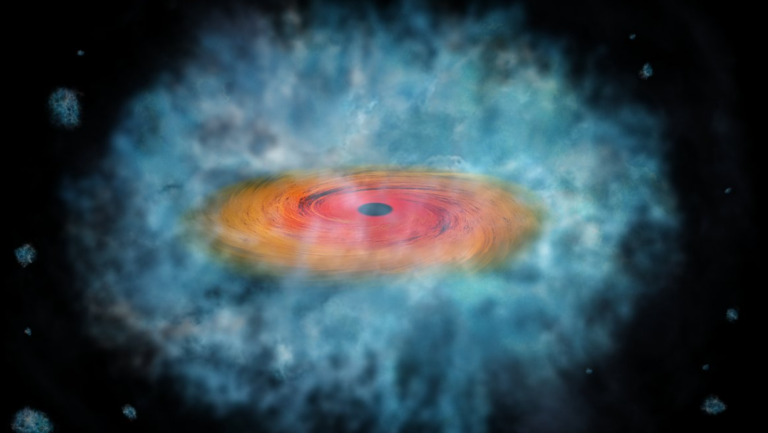Numerous Large Stars Have Mysteriously Vanished.
The life cycle of a star is often thought to start with formation in huge gas and dust clouds, and end with either the formation of a planetary nebula or a supernova explosion. But, in the last decades there have been accounts of how these massive stars just went missing. Despite predictions made through stellar evolution models that these stars should go supernova, they seem to just fade away. Scientists have investigated the behaviour of star VFTS 243, which is a main sequence star that has a black hole companion, and they have found that it and several other stars have collapsed into black holes.
During a star’s lifetime, the inward pressure of gravity is balanced by the outward pressure produced by nuclear fusion at the core of the star. Once the core becomes iron rich, as is the case with stars that are about eight solar masses, the fusion stops and thermonuclear force is no longer able to sustain itself. This leads to the core to shrink, then the outer parts to fall in towards the core and then to be hurled outwards in a blast that is referred to as a supernova. The details of the explosion mechanism and the manner in which the core collapses to form the compact remnant are still the subjects of discussion.
A supernova is considered an extremely energetic event that takes place in space. As the star’s core implodes, a shock front is formed and may lead to fusion in the outer envelope of the star and formation of the elements beyond iron. A recent study by an international collaboration of astronomers, including Alejandro Vigna-Gómez from the Max Planck Institute for Astrophysics in Germany, offers new insights into this process. The team showed that in certain instances, a star can be so large that even during the supernova event the shear weight of the star would stop the explosion.

The team has discovered what seems to be related to the phenomenon of missing stars. Over the last few decades, researchers have noticed that some stars just disappear from the sky and do not pass through the phases that would include the formation of a planetary nebula or a supernova explosion. But the recent discovery of supermassive stars collapsing completely without a supernova event presents a possible cause of this phenomenon.
In order to come to their conclusion, the team conducted an analysis of an object known as VFTS 243. This object is a binary system which is a star that is estimated to be 25 times the mass of the Sun and a black hole with a mass 10 times that of the Sun. Both objects orbit a common point of mass, one orbit taking 10. 4 days. This binary system is located in the Tarantula Nebula which is in the Large Magellanic Cloud and is about 160,000 light years away from the earth. It is important to mention that this binary system is not the only one of its kind and similar systems have been known to the scientists for several decades.

On examination of the system it was found that the orbit was nearly circular in shape. Since one of the stars has become a black hole and there is no explosion as well as the almost circular orbit, it can be assumed that the star has collapsed completely. This total collapse means that all the material from the star went into the black hole without any of it coming out as a supernova. Could it be that the team has discovered how the massive stars are extinguished?It seems to be true, however, more observations of binary systems which include stars and black holes are required to confirm this.
Do not forget to share your opinion with us to provide you with the best posts !




0 Comments